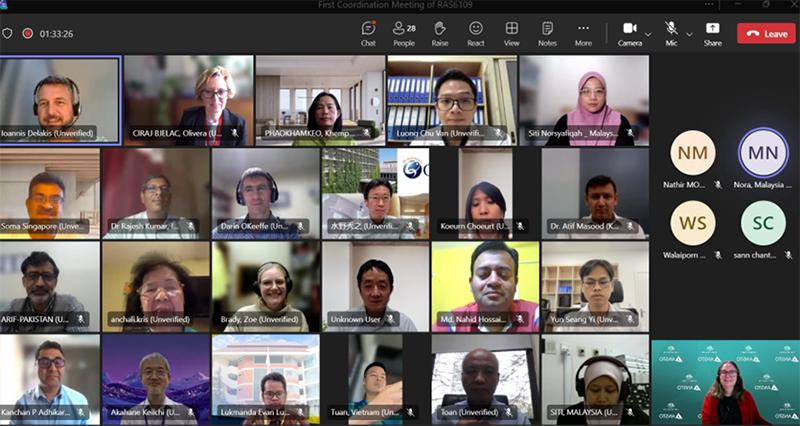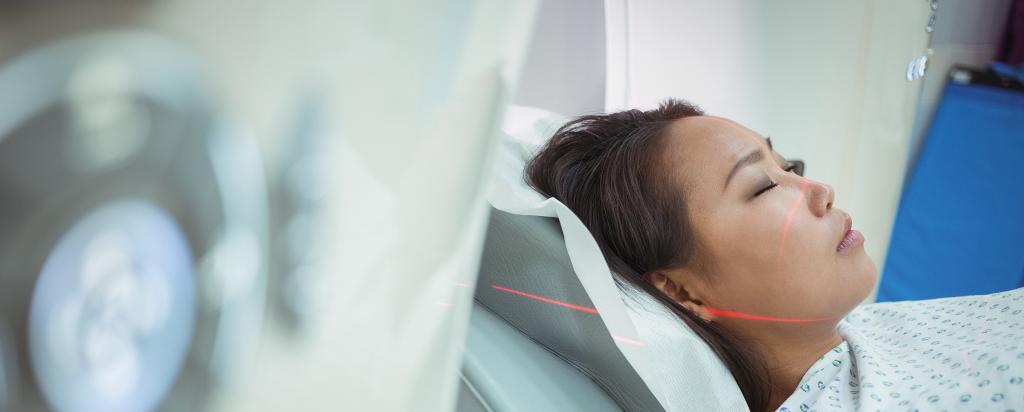

Published on the 24th May 2024 by ANSTO Staff
A new Australian led patient-care project for the Asia and Pacific region was launched last week with the generous funding of the International Atomic Energy Agency (IAEA) and the support of Government Parties to our Regional Cooperative Agreement for Research, Development and Training Related to Nuclear Science and Technology for Asia and the Pacific (RCA-AP).
The IAEA is providing $1.3m over four years to implement the project, ‘Improving the quality and safety of diagnostic and interventional radiology services to benefit health care by enhancing the status, knowledge and skills of medical physicists (RCA)’.
This project will contribute to the IAEA’s flagship initiative Rays of Hope, which aims to support low- and middle-income countries in providing access to diagnosis and treatment of cancer using radiation medicine. The initiative aims to bridge the gap in radiotherapy facilities, increase capacity building in radiation oncology and related fields, and facilitate cooperation in research, quality assurance, training and delivery of radiotherapy.
The new project will run for four years and will aim to enhance patient health care in Asian and Pacific countries through improvements in the quality and safety of diagnostic and interventional radiology by strengthening the clinical role of radiology medical physicists.

The project is led by Dr Ioannis Delakis with the strong support of Dr Zoe Brady, Chief Physicist (Diagnostic Imaging) and Radiation Safety Officer at the Alfred Hospital in Melbourne and Chair of the Australasian College of Physical Scientists and Engineers in Medicine (ACPSEM) Diagnostic Imaging Certification Panel. Australia’s Dr Donald McLean, a long-standing and much valued partner of the IAEA and RCA-AP, also presented at the virtual five-day workshop launch.
The RCA-AP is a treaty level agreement between 22 countries in the Asia and Pacific region under the auspices of the IAEA, including Australia, Bangladesh, Cambodia, China, Fiji, India, Indonesia, Japan, the Republic of Korea, Laos, Malaysia, Mongolia, Myanmar, Nepal, New Zealand, Pakistan, Palau, the Philippines, Singapore, Sri Lanka, Thailand and Viet Nam.
The regional programme comprises of 17 active technical cooperation projects in the fields of human health, agriculture, environment, industry and radiation protection. The projects are generously led by technical experts in our region and funded by the IAEA. All partnership projects have social and economic impact, making our region more healthy, secure, connected and prosperous.
Over the last two decades, the IAEA has supported the clinical training of medical physicists through several projects under the RCA-AP. However, there is still a need to strengthen capacity, particularly of radiology medical physicists.
Most countries in these regions lack professional recognition for medical physicists, and thus they are denied their status as clinical professionals. Since diagnostic and interventional radiology is widely used in the region, it is also the clinical area with the strongest potential for strengthening the role and demonstrating the added value of medical physics in health care.
Over the five-day workshop, Dr Ioannis Delakis, along with Dr Zoe Brady, virtually hosted the first coordination meeting with practitioners from 13 countries, along with observers from Papua New Guinea. Practitioners provided updates on the current status of radiology medical physicists in their countries, along with identified gaps and priorities for the radiology community. The presentations highlighted the need for established, recognised, clear and prominent roles for radiology medical physicists in clinical practice.
Dr Delakis said, ‘The launch marked the beginning of collaborative, impactful discussions and activities focusing on the need to bolster the recognition of the medical physics profession in our region in a field where there is a critical shortage’. He thanked all the practitioners representing our region for their presentations and looked forward to collaborating together over the next four years.
Dr Brady commented that “radiology medical physicists provide expert scientific input to ensure the safe, effective and efficient application of radiation for medical diagnosis and treatment. Coming together to work on this project in the region will provide a useful forum to optimise patient care”.
Dr Delakis and Dr Brady are looking forward to connecting with practitioners again at the first in-person regional training course in Malaysia later this year.
